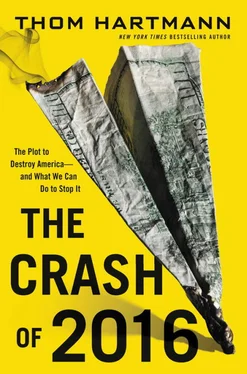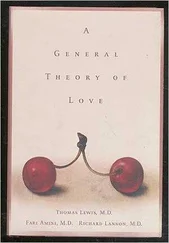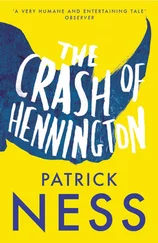“The educational programs suggested above would be designed to enlighten public thinking,” Powell wrote.
“But,” he added, “one should not postpone more direct political action, while awaiting the gradual change in public opinion to be effected through education and information.”
Then Powell bluntly laid it out: “Business must learn the lesson, long ago learned by labor and other self-interest groups. This is the lesson that political power is necessary; that such power must be cultivated; and that when necessary, it must be used aggressively and with determination—without embarrassment and without the reluctance which has been so characteristic of American business.”
He concluded, “As unwelcome as it may be to the Chamber, it should consider assuming a broader and more vigorous role in the political arena.”
Whether it was exclusively a result of Powell’s instructions, or a consequence of the Great Forgetting, or both, corporate lobbying in Washington exploded just after the Powell Memo was sent.
In 1971, only 175 companies had registered lobbyists. By 1982, there were nearly 2,500. Royalists were dumping huge amounts of money lobbying for favorable legislation. At the same time, they were seeding brand-new right-wing think tanks devoted to espousing the same free-market, Andrew Mellon, Warren Harding ideologies that led to the last Great Crash: massive tax cuts, deregulation, and privatization.
The American Legislative Exchange Council was founded in 1973. So, too, was the Heritage Foundation. And in 1977, the CATO Institute was founded, first as the Charles Koch Foundation, and then renamed a few years later as CATO. These Royalist think tanks were (and are) backed by millions of dollars from modern corporate Economic Royalists.
But to Powell, a lawyer, nothing was more important than targeting the courts.
He writes, “Under our constitutional system, especially with an activist-minded Supreme Court, the judiciary may be the most important instrument for social, economic and political change.”
He notes, “This is a vast area of opportunity for the Chamber, if it is willing to undertake the role of spokesman for American business and if, in turn, business is willing to provide the funds.”
Laying out specifics, Powell adds, “The Chamber would need a highly competent staff of lawyers. In special situations it should be authorized to engage, to appear as counsel amicus in the Supreme Court, lawyers of national standing and reputation. The greatest care should be exercised in selecting the cases in which to participate, or the suits to institute. But the opportunity merits the necessary effort.”
In the 1970s, with the Royalists’ Chamber of Commerce now focused on the courts, employing high-priced, savvy lawyers, and flooding the Supreme Court chamber with amicus briefs, a string of explosive decisions throughout the decade would give the Royalists what they needed to eventually overthrow FDR’s New Deal Revolution that was culminating in the 1960s.
In 1976, in Buckley v. Valeo , the Supreme Court ruled that political money is speech, implying that those who have more money have more free speech in our political system. That same year, in United States v. Martin Linen Supply Co. , corporations are given Fifth Amendment protections against double jeopardy. And in Virginia State Board of Pharmacy v. Virginia Citizens Consumer Council , the Supreme Court ruled that advertising is a protected form of free speech.
A year later, in 1977, in First National Bank of Boston v. Bellotti , the Supreme Court overturned state restrictions on corporate political spending, saying such restrictions violate the First Amendment.
In their dissents in the case, Justices White, Brennan, and Marshall argue, “The special status of corporations has placed them in a position to control vast amounts of economic power which may, if not regulated, dominate not only our economy but the very heart of our democracy, the electoral process.”
Then came the Federalist Society, founded in 1982 with millions of dollars in funding by the Royalist-allied Bradley Foundation, which built a nationwide network of jurists, attorneys, legal scholars, and politicians to indoctrinate a new generation’s legal system with Royalist interpretations: Corporate personhood is real, money is speech, democracy is not sacred, and organized money should always have privilege over organized people.
A new wave was rising, and sweeping across the political and economic landscape in America. Unlike in the 1960s, the Economic Royalists were riding this one.
CHAPTER 3
The Crisis Capitalists
Instead of citizens, it produces consumers. Instead of communities, it produces shopping malls. The net result is an atomized society of disengaged individuals who feel demoralized and socially powerless. In sum, neoliberalism is the immediate and foremost enemy of genuine participatory democracy, not just in the United States but across the planet, and will be for the foreseeable future.
—Professor Robert W. McChesney, 1999
Just as Lewis Powell’s memo was being circulated in corporate boardrooms across America, a social democracy under pressure in Latin America fell. And the Economic Royalists saw an opportunity to remake the world into a neofeudal corporatocracy.
After a military coup in September 1973, the democratically elected socialist president of Chile, Salvador Allende, wound up with a bullet in his head. His country was taken over by General Augusto Pinochet, kicking off a more-than-a-decade-long rule of terror that led to the death and detention of tens of thousands of people.
General Pinochet was adept at running a military state and ruthlessly squashing dissension. But he knew nothing about economics. And to the Economic Royalists, who were just coming out of the shadows in America, Chile was a blank slate—the perfect opportunity to reintroduce the world to Royalist economics.
While Adam Smith was the guy who put economics on the map in the eighteenth century, John Maynard Keynes made it useful for governments.
Keynes saw the importance of a market-based economy, where private citizens were free to buy and sell as they please. He saw that as the best way to amass wealth and improve the lives of everyone in a society. But Keynes knew there was a danger in letting that free market exist completely unchecked, as the Royalists had urged, and argued that unrestrained capitalism will lead to perpetual boom-and-bust cycles—people making huge amounts of money… and then jumping off buildings when they lose it all.
To stabilize the system, Keynes argued that the government should step in. With a number of tools at its disposal, such as the ability to manipulate the money supply and put in place regulations, as well as to spend huge amounts of money, the government can mediate the mood swings of the economy. There would still be recessions, but under the new Keynesian mixed economy, those recessions would be short-lived, and over the long haul the society would experience sustained growth.
A core element of Keynes’s theory was that an economy churned because of three basic actions: consumer spending, business spending, and government spending. When a recession crept in, and businesses got wiped out and consumers were laid off and unable to spend money, then it was up to that critical third piece of the puzzle—government spending—to kick in and keep the economy afloat.
When Franklin Roosevelt was elected in 1932, he looked to Keynes to help get the United States out of the Great Depression. He infused into the economy massive amounts of money in an attempt to get consumers spending again and to give businesses a reason to expand and hire more workers. And it worked.
Читать дальше












